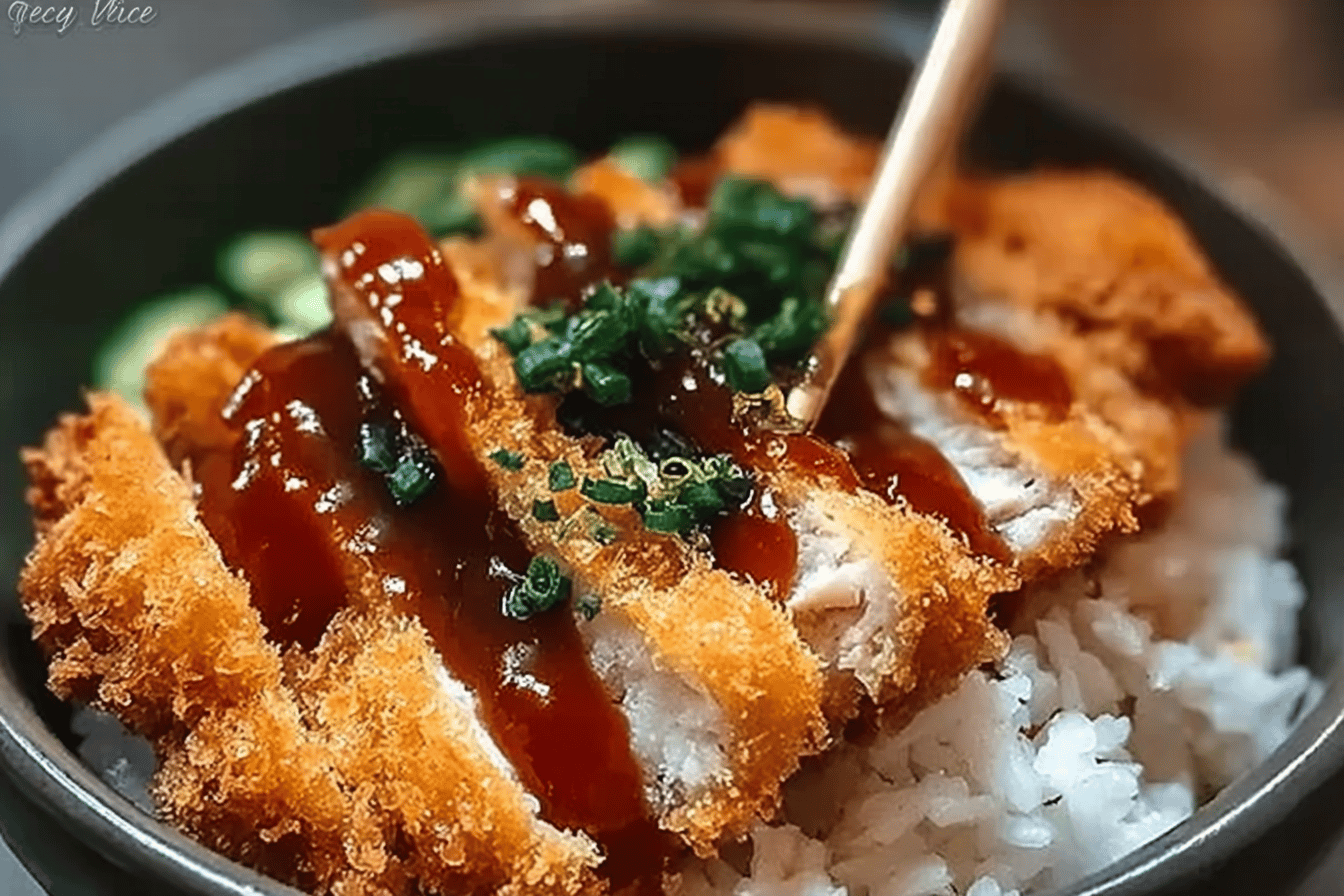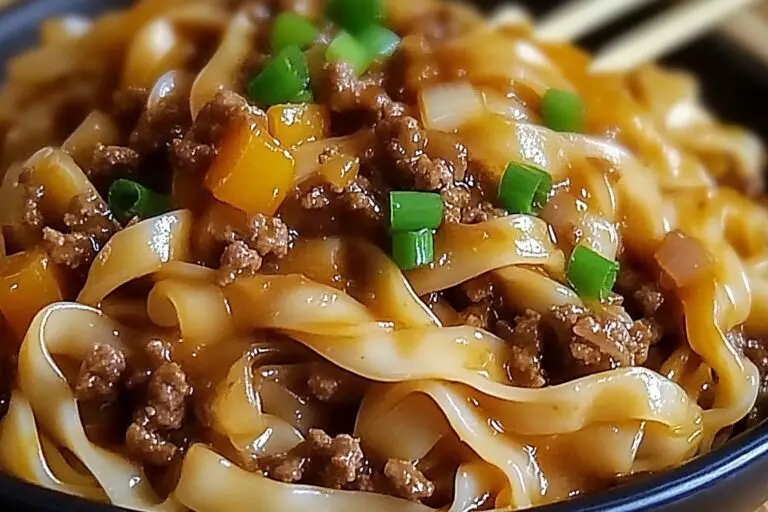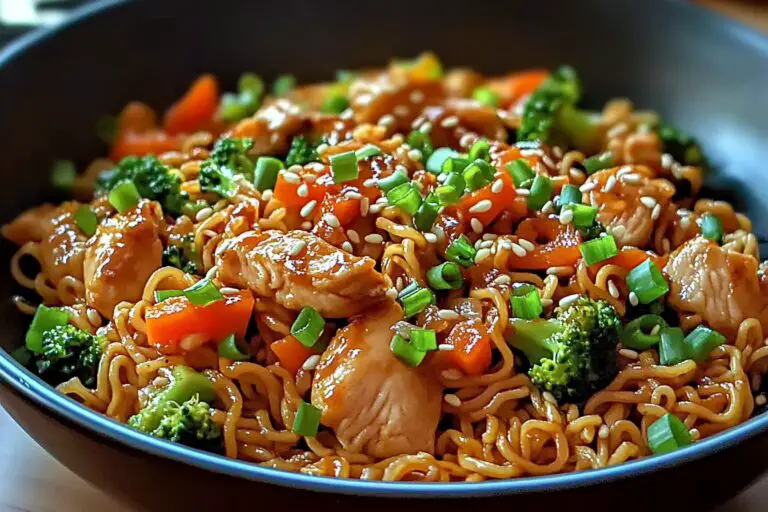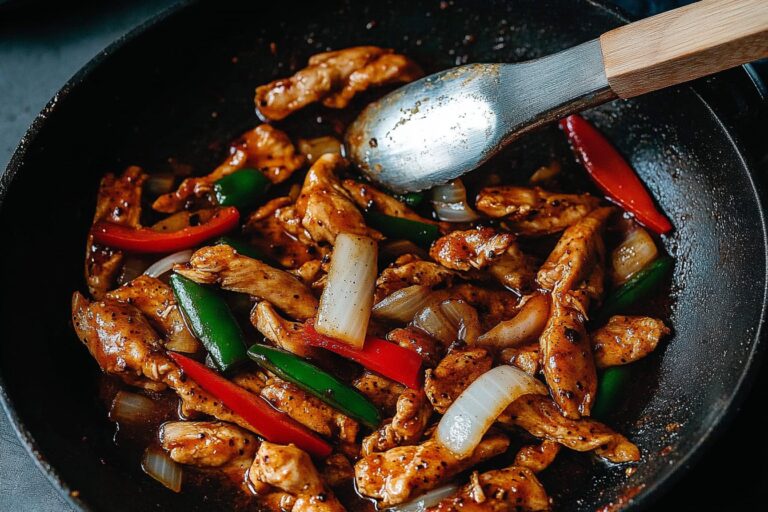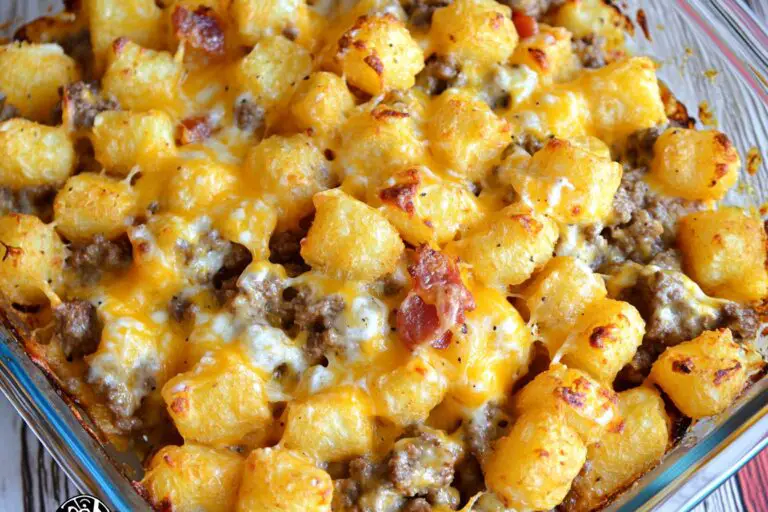Japanese Katsu Bowls Recipe
Introduction
Japanese Katsu Bowls with Tonkatsu Sauce are a delicious, savory, and crowd-pleasing dish that is perfect for lunch or dinner. This recipe combines crispy, golden-brown panko-coated meat served with rice and a flavorful tonkatsu sauce. Bursting with the comforting flavors of Japanese cuisine, this dish is ideal for anyone looking to add some variety to their home-cooked meals. Whether served alone or paired with classic sides like shredded cabbage, it brings a unique and delightful dining experience right to your table.
Detailed Ingredients with measures
Pork Cutlets
1 lb (450 g) pork loin, thinly sliced
Salt and pepper, to taste
1/2 cup (65 g) all-purpose flour
1 large egg, beaten
1 cup (120 g) panko breadcrumbs
Cooking oil, for frying
Tonkatsu Sauce
1/4 cup (60 ml) ketchup
2 tablespoons Worcestershire sauce
1 tablespoon soy sauce
1 tablespoon sugar
To Serve
2 cups (480 ml) cooked white rice
Shredded cabbage (optional)
Chopped scallions (optional)
Sesame seeds (optional)
Prep Time
Preparing the ingredients for your Japanese Katsu Bowl is an essential first step. To begin, gather all items listed above and set up a breading station with three bowls for flour, egg, and panko breadcrumbs. Lightly season the pork cutlets with salt and pepper, ensuring each piece is evenly coated for optimum flavor. Prep time is approximately 15 minutes.
Cook Time, Total Time, Yield
Cook time is about 15 minutes, making the total time for this recipe approximately 30 minutes from start to finish. This recipe yields 4 servings, perfect for a small family or group. Serve the crispy pork cutlets on a bed of rice, drizzle with tonkatsu sauce, and garnish with your optional toppings to complete the dish!
Detailed Directions and Instructions
Step 1: Prepare the Pork Cutlets
1. Trim any excess fat off the pork cutlets.
2. Pound the pork cutlets evenly until they are about ¼ inch thick.
3. Lightly season both sides of the pork cutlets with salt and pepper.
Step 2: Set Up the Breading Station
1. Place three shallow plates or bowls on a flat working surface.
2. Fill the first plate with all-purpose flour for dredging.
3. In the second plate, whisk eggs until fully beaten.
4. In the third plate, add the panko breadcrumbs.
Step 3: Bread the Pork Cutlets
1. Dredge each pork cutlet in the flour, shaking off the excess.
2. Dip the floured pork cutlet into the beaten egg, ensuring it is fully coated.
3. Press the pork cutlet into the panko breadcrumbs, coating both sides evenly.
4. Repeat this process for all pork cutlets and set them aside on a clean plate.
Step 4: Heat the Oil
1. Pour enough oil into a large frying pan to submerge the pork cutlets (approximately ¼ to ½ inch deep).
2. Heat the oil over medium-high heat until it reaches 340–350°F (170–175°C). Use a thermometer for accuracy.
Step 5: Fry the Pork Cutlets
1. Carefully place the breaded pork cutlets into the hot oil without overcrowding the pan. Fry in batches if necessary.
2. Cook each cutlet for about 2–3 minutes per side, or until they turn golden brown and reach an internal temperature of 145°F (63°C).
3. Remove the cooked cutlets and place them on a wire rack or paper towels to drain any excess oil.
Step 6: Prepare the Tonkatsu Sauce
1. In a small bowl, combine ketchup, Worcestershire sauce, soy sauce, sugar, and dijon mustard.
2. Stir well until all ingredients are fully mixed and the sauce is smooth.
Step 7: Assemble the Katsu Bowls
1. Cook steamed rice according to the package instructions and divide it into serving bowls.
2. Slice the fried pork cutlets into strips and arrange them over the rice.
3. Drizzle the prepared tonkatsu sauce generously over the pork cutlets.
4. Garnish with shredded cabbage or your choice of vegetables as desired.
Notes
Note on Pork Cutlets
Using boneless pork loin offers the best results for this dish, but boneless chicken breast or thighs can also be used as a substitute.
Note on Panko Breadcrumbs
Panko breadcrumbs are key to achieving a crispy texture. Avoid substituting with regular breadcrumbs, as they won’t deliver the same light and airy crunch.
Note on Frying
Maintain a consistent oil temperature during frying to ensure that the pork cooks evenly and becomes golden and crisp.
Note on Tonkatsu Sauce
If you prefer a richer sauce, adjust the ketchup-to-Worcestershire ratio or experiment with additional seasonings like garlic powder or cayenne pepper.
Additional Serving Suggestions
Pair the katsu bowls with miso soup or a light side salad to complete the meal. You can also sprinkle some sesame seeds or scallions over the katsu for extra flavor and presentation.
“`html
Cook techniques
Perfecting the Pork Cutlet
To achieve a perfect cutlet, pound your pork until it is about half an inch thick to ensure even frying. Coat it thoroughly in flour, egg, and panko breadcrumbs for crispness.
Frying for Crispness
Use a neutral oil heated to 350°F for frying. Cook the pork cutlet until golden brown on each side, usually about 2-3 minutes per side, and drain on a wire rack to maintain crispiness.
Making Tonkatsu Sauce
Combine ingredients like ketchup, Worcestershire sauce, and sugar to create a traditional Tonkatsu sauce. Adjust flavors based on your preference for sweetness or tang.
Rice Preparation
Ensure perfectly cooked rice by rinsing it thoroughly before cooking. This removes excess starch and prevents clumping, resulting in fluffy rice to complement the dish.
Assembling the Bowl
Layer the bowl starting with rice, add finely shredded cabbage, the crispy pork cutlet, drizzle with Tonkatsu sauce, and garnish with green onions or sesame seeds for visual appeal.
Shredding the Cabbage
To create the classic cabbage base, use a sharp knife or mandoline slicer for finely shredded cabbage. It balances the richness of the pork cutlet and enhances the texture of the dish.
FAQ
What type of pork cut is best for Tonkatsu?
Boneless pork loin is preferred as it is tender and easy to pound into a uniform thickness.
Can I bake or air fry the pork cutlet instead of deep frying?
Yes, baking or air frying is a healthier alternative, but deep frying provides the crispiest texture. Brush the cutlet with oil before baking or air frying for a golden crust.
What can I use as a substitute for panko breadcrumbs?
Regular breadcrumbs can be used as a substitute, but panko breadcrumbs yield a lighter and crispier texture.
How do I store leftover Tonkatsu and rice bowls?
Store the pork cutlet, rice, and toppings separately in airtight containers in the refrigerator. Reheat the cutlet in an oven or air fryer to regain crispiness before assembling the bowl.
Is it possible to make this dish gluten-free?
To make the dish gluten-free, use gluten-free flour, gluten-free panko, and ensure Worcestershire sauce is certified gluten-free.
Can I use other proteins instead of pork?
Yes, chicken or tofu can be substituted for pork for a variation. Prepare and fry them following similar techniques.
How do I prevent the pork cutlet from turning soggy?
Ensure the pork cutlet is placed on a wire rack after frying to let excess oil drip off, rather than on a paper towel which can trap moisture.
“`

Conclusion
Japanese Katsu Bowls with Tonkatsu Sauce are a perfect fusion of crispy textures and savory flavors, offering a satisfying and well-balanced meal. The combination of the crunchy katsu, steamed rice, and tangy sauce makes it a comforting dish that’s easy to prepare for any occasion. Whether you’re cooking for family or hosting a dinner, this recipe is sure to impress with its authentic flavors and wholesome ingredients. A delicious experience awaits in every bite.
More recipes suggestions and combination
Chicken Teriyaki Bowl
Swap out the katsu with grilled chicken glazed in teriyaki sauce for a flavorful alternative.
Vegetarian Katsu Bowl
Replace the traditional katsu with crispy fried tofu or eggplant for a vegetarian-friendly option.
Shrimp Tempura Bowl
Combine your rice bowl with crispy shrimp tempura and a drizzle of tonkatsu or sweet chili sauce.
Katsu Curry Bowl
Serve the katsu with a rich, savory Japanese curry instead of tonkatsu sauce for an extra comforting twist.
Spicy Tonkatsu Bowl
Add a kick to your katsu bowl by incorporating spicy mayo or chili oil alongside the traditional sauce.
Yakisoba Katsu Combo
Pair the crispy katsu with savory yakisoba noodles for a hearty and unique combination.
Salmon Katsu Bowl
Use breaded and fried salmon instead of pork or chicken to introduce a fresh, seafood option that pairs excellently with the tonkatsu sauce.
Onsen Tamago Addition
Enhance the dish with the addition of a soft-boiled onsen tamago on top for extra richness and depth.
Fresh Veggie Side
Serve alongside a refreshing seaweed salad or sesame spinach for a more balanced meal.

